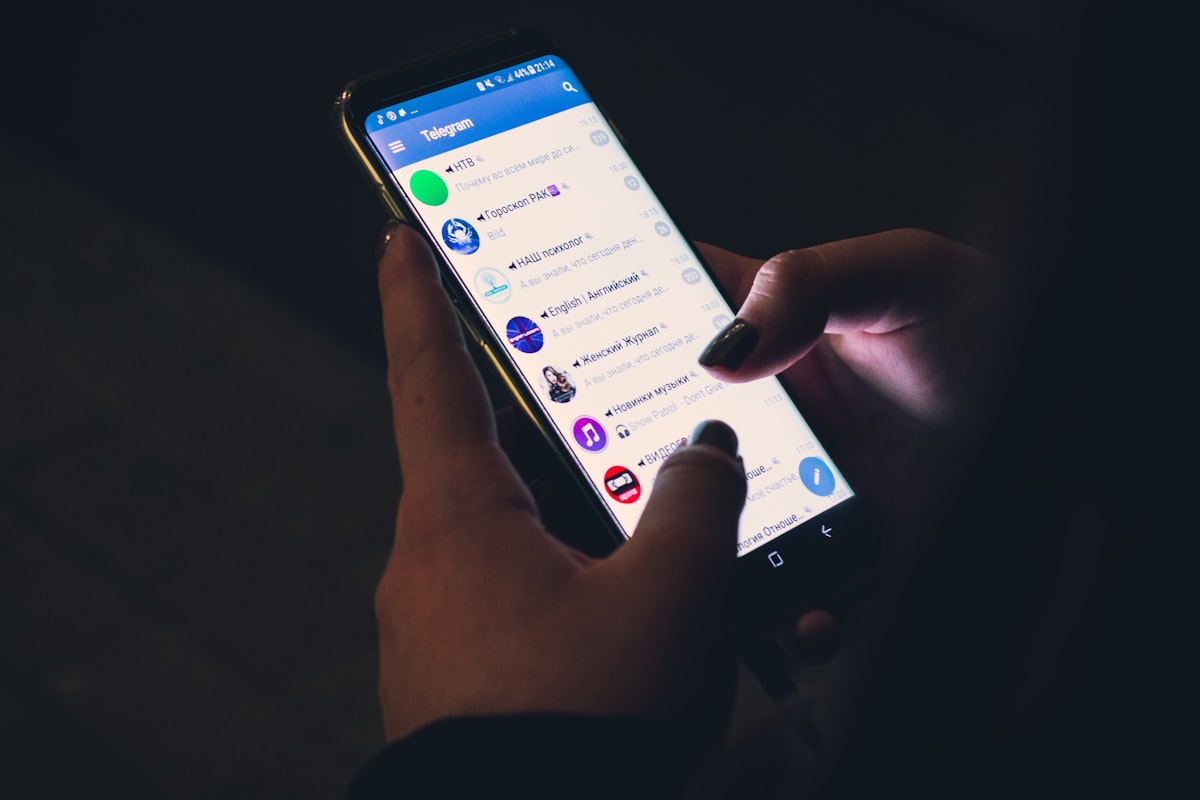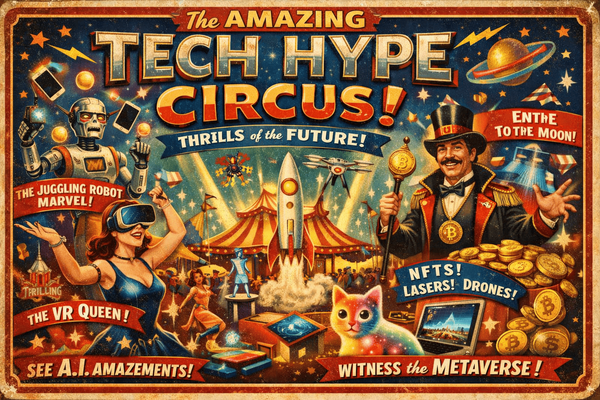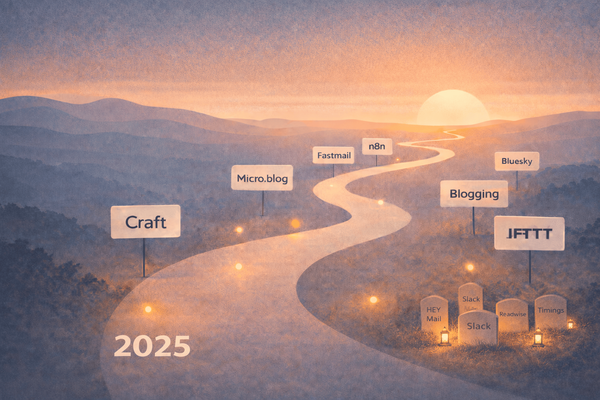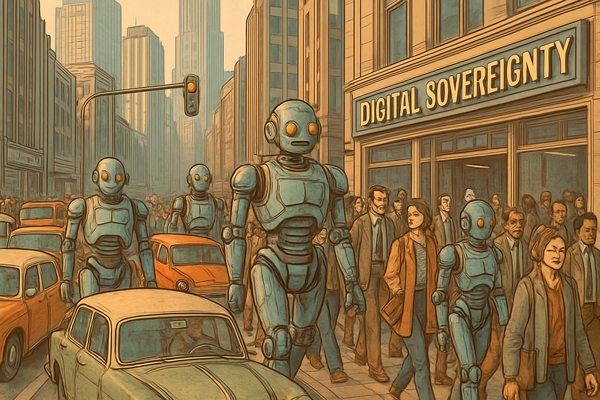Which Messaging Apps do I Use, And for What Purpose
I use many messaging apps, but each of them has a specific use case.

Don’t you think we’re using too many messaging apps? How could this be otherwise? What if there was one unique app to rule them all? While waiting for this less-than-probable future, I created a list of all the messaging apps I use in my digital life. There are (way too) many of them. For this article, I define the messaging app category as an application or service that allows, at the minimum textual communication between two people, a group of people or within a forum space. It might be a bit too large a definition, but it encompasses all the apps I use to stay in touch with someone or a community. A more complete description is given at the end of this article. So, let’s start with…
iMessage
I’m living in North America, in Canada, more specifically. I often say Canada is the next biggest iPhone country after the US. Most people I care to text with are iPhone users, so I use iMessage personally and professionally. Apple’s iMessage is an excellent messaging service, secure and reliable, if most people use iPhones, too. Over the years, iMessage got some nice additions and much-needed ones, emojis, applets, etc. With iOS 17, Apple finally sorted out the keyboard’s design and the sharing action. It’s a no-brainer for someone like me, who’s heavily invested in Apple’s ecosystem.
Telegram
Telegram, meanwhile, has transcended being a mere messaging service. The company iterated on its group messaging system creating a system that supports communities and even blog-style posts. Its more recent forays into live streaming suggest an ambitious expansion. Telegram is hands-down the best platform for social messaging. — Max Eddy for PC Magazine
Telegram is the second most enjoyable messaging app. I’m using Telegram in a “one-way mode” to get news about the war in Ukraine by subscribing to many channels, all feeding information about the war. Some are using Twitter for that, but I’m no longer on Twitter (read how to leave Twitter the right way). Did you know that Telegram is one of those well-designed apps? It really is. I wouldn't say I like the founder's position on Apple, though. He's pretty opinionated. Nevertheless, Telegram is a joy to use. I pay a monthly subscription, which I'll stop when the war ends.

Wavelength

Mainly as a complement to Micro.blog, but in no way associated with it, Wavelength tries to make its place in the messaging apps landscape. A small group of Micro bloggers are there. Here is the invite link. It free. I joined a few other groups during the WWDC conference back in June. I'm staying there to keep an eye on this underdog messaging app. It gets updated frequently. It runs on all of Apple's platforms. Natively. Oh, there is some AI integration into the platform. You can invoke the AI assistant right in the middle of a conversation like it was another member of the group. They also introduced AI personality, where you can build a bot based on different variables to give some personality to the bot. Clever. I made one representing Steve Jobs! You can read a portion of my conversation with "him” below.

Discord
What a clusterfuck! Discord UI feels and looks so busy! Discord is similar, from my experience to Slack, only worst. I’m subscribing to fewer than ten server instances: Hu.ma.ne., Omnivore, Pixelfed, Power On, Capacities, Inoreader and Midjourney. It’s a good way to stay in touch with user communities and product news.

Another reason I use Discord is to interact with Midjourney, an AI-based image-generation service. Midjourney can produce impressive imagery, as seen on its showcase website. This is my first experiment with Midjourney. I'm still in awe. Discord disappears in that context, thanks to Midjourney’s artistic prowess.


Slack
Finally, the venerable Slack is the last platform worth mentioning. I am only on Slack for the Craft Docs community of users and the direct link with the developers. This is where discussions and debates happen after each Craft release. In-between releases, the community is very quiet.
Speaking of Meta... I recently created an account on WhatsApp just before going to Morocco. It was a matter of conveniently getting in touch with our tour guide. A vast majority of people in Europe, South America are on WhatsApp. I mean, more than two billion people are on WhatsApp! I also have a friend living in Tulum, Mexico. There too, WhatsApp is a standard. One thing that I don’t like about this app: is the “fake” requirement to get access to all my contacts to improve the user experience. Bullshit. That’s Meta in its full glory. I reluctantly agreed to allow access to my contacts. 😔 If I could summarize my sentiment about WhatsApp: the main problem with this platform is... being owned and operated by Meta. Consequently, I minimize my use of it.
Facebook Messenger
I rarely use Messenger because I despise Meta, its business model, and its founder. I use Messenger only to talk to some friends or family members, not on an iPhone or too lazy to get outside of the Facebook world. Sigh.
Not on the list
Circle and Reddit didn’t make the list because these platforms focus not on one-to-one communication but on the community of people sharing information. Both of them support sending messages to another user, but it’s not the focus. A more complete and definitive definition of messaging apps follows, thanks to ChatGPT.
Messaging apps are a category of applications that enable users to exchange messages and communicate with each other in real-time or near real-time. Several defining characteristics set messaging apps apart from other types of applications:
- Real-time communication: Messaging apps facilitate instant or near-instantaneous communication between users. Messages are typically delivered and received instantly, allowing for quick and fluid conversations.
- Text-based messaging: While many messaging apps now support multimedia content like photos, videos, and audio messages, the core functionality revolves around text-based communication. Users can send and receive text messages in individual or group chats.
- Multimedia support: As mentioned, messaging apps often support various types of multimedia, including photos, videos, GIFs, stickers, and voice messages. This enriches the communication experience and allows users to express themselves more creatively.
- Presence and status indicators: Messaging apps often display the online/offline status of users and sometimes indicate when a user is currently typing a message. This feature helps users understand each other's availability for conversation.
- Read receipts and delivery confirmation: Many messaging apps provide read receipts or delivery confirmation, indicating when a message has been seen by the recipient or successfully delivered to the server.
- Group chats: Messaging apps allow users to create group conversations where multiple people can participate and interact simultaneously.
- Emojis and reactions: These apps often include many emojis and reactions that users can use to convey emotions, responses, or show appreciation without typing a message.
- End-to-end encryption: Some messaging apps offer end-to-end encryption, ensuring that only the sender and recipient can read the messages and not even the service provider can access the content.
- Voice and video calling: Many messaging apps now include voice and video calling capabilities, allowing users to make audio or video calls within the app.
- Cross-platform availability: Messaging apps are usually available on multiple platforms, such as smartphones, tablets, desktop computers, and web browsers, allowing users to communicate seamlessly regardless of their devices.



